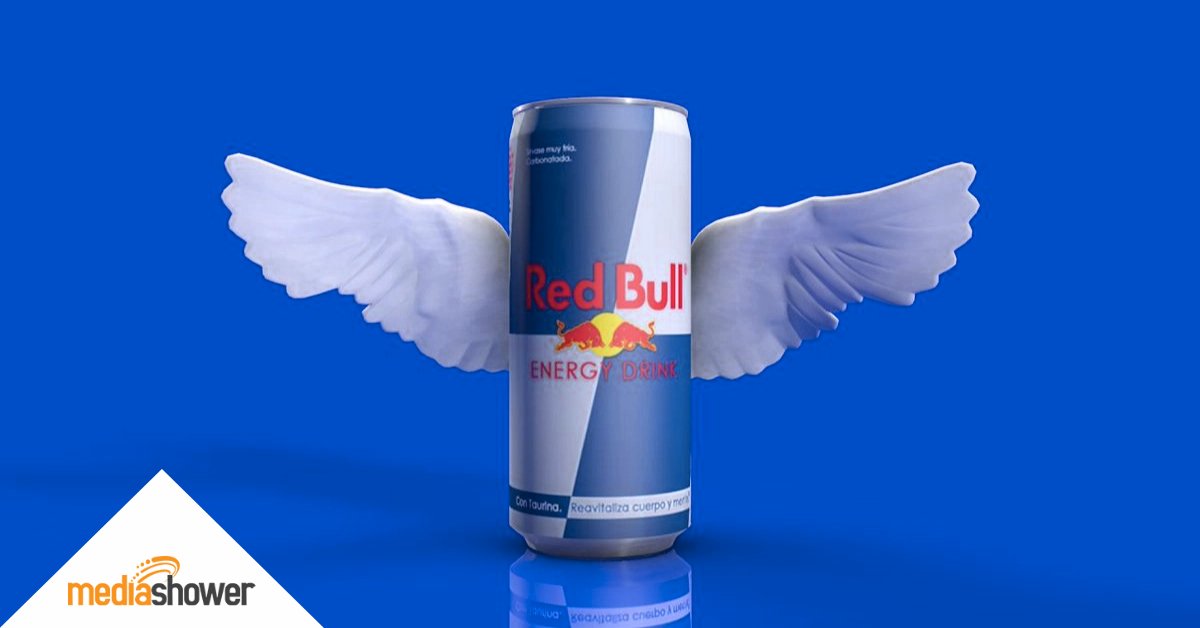
Quick Summary
- Red Bull revolutionized brand marketing not by sponsoring extreme sports culture but by owning it.
- With over 750 athlete partnerships, proprietary global events, and its own media house, Red Bull built a self-sustaining content and lifestyle ecosystem.
- Through relentless commitment and innovative storytelling, Red Bull transcended beverages to become a billion-dollar brand that sells adrenaline and aspiration.
Red Bull isn’t really in the energy drink business. They’re in the business of human potential.
What began as a niche Thai beverage has morphed into one of the most influential brands on the planet, synonymous with courage, creativity, and the edge of human achievement. With the simple yet powerful promise to “give you wings,” the brand tapped into something deeper than caffeine: the human drive to push limits and defy gravity (literally and figuratively).
“Red Bull Crashed Ice”
The result: a new genre of extreme sports marketing and an unbreakable link between its product and the pursuit of the impossible.
Campaign Background
In 1984, Austrian entrepreneur Dietrich Mateschitz partnered with Thai businessman Chaleo Yoovidhya to launch a localized version of Krating Daeng to the global market. But from the beginning, Mateschitz saw beyond the can.
He envisioned Red Bull as a brand that would live in the worlds of its consumers: high-energy, risk-taking, and youth-driven. Thirteen years later, the now-iconic slogan “Red Bull Gives You Wings” launched, capturing the brand’s ethos in five words.
Red Bull’s marketing DNA traded traditional ads for experiential branding, starting with its first athlete sponsorships in Formula One and extreme sports in 1989. Instead of just attaching its logo to existing events, it began creating and owning them.
“F1 vs Rally vs Drift Car vs Truck: Ultimate Race.”
Campaign Overview
Today, Red Bull operates one of the most comprehensive marketing ecosystems in the world:
- 750+ athletes across 73 countries wear the Red Bull crest, from BMX riders to cliff divers.
- The brand owns high-profile sports teams, including Red Bull Racing (Formula 1), RB Leipzig (soccer), and EC Red Bull Salzburg (ice hockey).
- Red Bull invents its own extreme sporting events, including the human-powered flying competition Flugtag, Red Bull Crashed Ice, and the death-defying Air Race.
The brand sets the stage for spectacle in an unprecedented way.
The Marketing Jump Heard ’Round the World
No campaign better encapsulates Red Bull’s brand ethos than Red Bull Stratos—a moment where storytelling, science, and spectacle collided in front of a global audience.
“Red Bull Stratos – World Record Freefall.”
In 2012, Austrian skydiver Felix Baumgartner stepped out of a capsule suspended 128,000 feet above Earth’s surface, free-falling from the edge of space. The marketing moonshot was broadcast live and watched by millions.
The Stratos mission shattered records—and expectations—generating nearly 1 billion video views and carving out a place in history for both Baumgartner and the brand that sent him skyward.
Stratos was the embodiment of everything Red Bull had built up to that point:
- An obsession with human potential
- A commitment to owning, not renting, the spotlight
- The ability to blur the line between brand content and cultural event
Stratos positioned the brand as a symbol of possibility, precision, and pushing boundaries.
The Athlete Machine
If Red Bull Stratos was the brand’s leap into history, “The Athlete Machine (Red Bull Kluge)” was its masterclass in choreography, creativity, and content engineering.
“The Athlete Machine | Red Bull Kluge”
The video was released in 2012 and features elite Red Bull athletes—ranging from BMX riders to slalom skiers—performing a human-powered Rube Goldberg machine across a massive, custom-built course.
The spectacle blends athleticism with precision engineering, all executed in a single seamless sequence.
Kluge was a brand manifesto in motion. By combining physics, performance, and play, Red Bull showed how sport can become spectacle, and how content can transcend advertising.
The production generated millions of views, but more importantly, it deepened Red Bull’s role as a cultural innovator—where athletes aren’t just competitors, but collaborators in unforgettable stories.
With the Kluge, Red Bull once again went big to showcase talent in an imaginative, unexpected way.
The Engine: Red Bull Media House
Pulling off feats like Stratos and the Athlete Machine required a content machine built to scale awe. Red Bull Media House is that machine.
From producing cinematic-quality documentaries to dominating YouTube with over 10 million subscribers, Red Bull has become as much a media brand as a beverage company. They do much more than sell cans; their videos tell stories. Stories people seek out, share, and remember.
This content-first mindset isn’t a side project; it’s core to the business. Red Bull reinvests a staggering 25-30% of its annual revenue—around €3 billion—into marketing. Not traditional ads, but experiential, owned, and immersive media that makes the brand feel inevitable in culture.
“Flying a Plane Through Tunnels.”
Key Success Factors and Innovative Elements
Red Bull’s rise was driven by a radically different approach to branding, more culture creator than conventional advertiser.
These strategies illustrate the difference:
Authentic brand alignment
Energy drinks and extreme sports go together like adrenaline and oxygen. The brand built credibility by committing to the space long before it was cool, and has stayed true to it ever since: fundamental, not forced.
Culture through invention
Why rent the spotlight when you can build your own? Red Bull created events like Flugtag (which draws over 200,000 attendees) and Crashed Ice, cementing itself as a cultural originator rather than a corporate sponsor.
“8 Flugtag Designs We’ll Never Forget”
Ownership mentality
Red Bull doesn’t just show up; it takes control. Whether it’s Red Bull Racing in F1 or entire sports formats, the brand treats marketing like product development: Own it, refine it, scale it.
Athlete development as strategy
Red Bull nurtures talent from grassroots to greatness through its Junior Programs. Athletes are endorsers and partners in the brand’s long-term vision.
Content that people seek out
Red Bull Media House flips the advertising script: Instead of buying attention, they earn it. Unlike other videos that interrupt your feed, their videos are the feed.
Community and participation
Fans become brand participants. Whether competing in Flugtag or submitting GoPro footage, Red Bull turns customers into content creators, co-building the brand.
Razor-focused identity
Red Bull never chases trends outside its lane. While other brands diversify, Red Bull’s unwavering focus on extreme sports keeps it cool, credible, and uncontested.
“Flying Into an Active Volcano.”
Impact and Results
From bold vision to market domination: Red Bull has turned brand storytelling into measurable global impact.
- Market leader. Red Bull holds 43% of the global energy drink market.
- Top-tier brand. It ranks as the #3 soft drink brand worldwide, behind only Coca-Cola and Pepsi.
- Iconic slogan. “Red Bull Gives You Wings” is one of the most recognized taglines in the world.
- F1 dominance. Red Bull Racing has won multiple Constructors’ and Drivers’ Championships.
- Historic moment. The Red Bull Stratos space jump nears one billion video views.
- High engagement. Millions interact with Red Bull events live and online, fueling brand loyalty.
“The 5 Most Spectacular Soapbox Finishes”
Marketer Takeaways
- Own your category: Create your own culture beyond the basic sponsorship.
- Play the long game: Authenticity comes from sustained investment over decades.
- Become the content: Make media your audience actively seeks, not passively tolerates.
- Prioritize participation: Events and user-generated content deepen emotional connections.
- Stay true: Red Bull’s success proves that focus beats flexibility when building brand identity.
Media Shower’s AI marketing platform helps brands launch unforgettable campaigns. Click here for a free trial.


